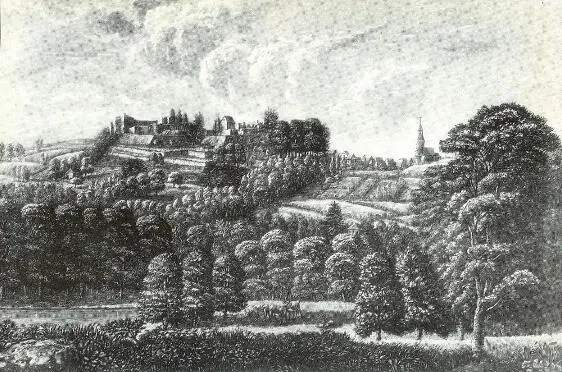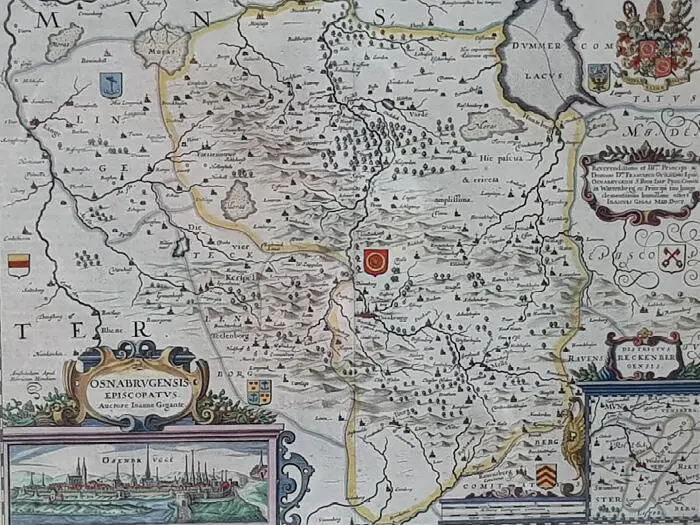These two carnages, the “Thirty-Year-War” (1618 -1648 A.D.) and the “Witch-Hunt” or “Witch-Cremation” period of the 16th and 17th centuries, were undoubtedly the ultimate peak where mercenaries and soldiers massacred the population as never before – under the jubilations of theologians on both sides. Both events perpetuated the egoistic politics of the Central European powers and firmly established the split between Catholoc and Protestant Europe. At the end, Spain lost its military supremacy it had enjoyed before.
Humanity suffered through-out and was in certain areas not even existing anymore. Central Europe experienced an awesome long period of two belligerent parties – the Clericals (Pope, bishops, etc.) on one hand and the Seculars (Emperor, nobility, etc.) on the other – fighting stubbornly and mercilessly, without pitty, about their predominance in power and faith. All this happened on the back of mostly uneducated people.
Thus, and with hinsight, several hundred years later, it’s more easily to clarify many particulars and courses of the time: Was the “Reformation” just a lucky btreak or a misadventure of history?
It depends on one’s particular point of view. Within this framework, Luther and the Reformation were at the time only a part of this development. Others were climate change (“Little ice-age”), resulting in crop failure, inflation, hunger, general poverty and a high mortality as additional contributing elements.
At the same time, however, while Richelieu modernized France and England lived through a golden age under Queen Elisabeth, the bulk of the people – mostly uneducated – suffered in an unknown monstrosity under the century old quarrels between the Clerical and Secular powers. The Church used this framework to denounce and eradicate the so called “leftovers of the old paganism”: Many thousands of people lost their lives in the subsequent purgatory of witch-hunt. It was the wilful intention to subjugate the people to the “Only blessed Creed” – or turn them fugitive. Church and history called it Inquisition.
This, by all means, is a situation comparable to the dictatorships of the
20th century as well as those most recent events in the Middle East.
The property and other assets of the ”cleaned” or just burned in the inferno of the purgatory turned up as an
additional fortune at the cash-register of the Church.
When tourists from around the world visit today those wonderful monasteries, churches and other buildings of the baroque period, it should not be forgotten that this splendour is owned in part to the extortions of the witch-hunt during the 16th and 17th centuries. Thus, the many sorrows of the persecutors did help the “Only blessed Church” to shine again with new saints and lots of gold and glitter.
All this was generally speaking, an ideal presupposition for the exodus of millions of people, leaving their home base in Europe to venture for the newly discovered “New-World”.
Following the timetable over centuries, the “Tithe” was initially only a tax or an assessment and later turned into different forms of bondage, lasting well into the 19th century, including a variety of services as well as military duties. People were fighting or just leaving for better horizons, aiming early-on for Eastern-Europe and even along the route of the crusaders and later-on, when mobility made it possible, for America.
While on the move, many stayed, and depending on circumstances, did accept new customs and beliefs.
Exemplary, for a number of events between 1175 A.D. and 1190 A.D. give support to the above assumption: Friedrich I, called Barbarossa (“red-beard”), since 1155 A.D. Emperor of the “Holy Roman Empire of German Nation”, was struggling with his cousin Henry the Lion (Heinrich der Löwe, at the time Duke of Saxony) for power. Henry was a son-in-law of Henry III, King of England of the house of Anjou or Plantagenet. Each side had found help among secular rulers (e.g., Albrecht of Brandenburg, Ludwig of Thüringen, etc.) as well as high-est representatives of the Church (e.g., Archbishop Philip of Colon, Archbishop Wichmann of Magdeburg etc.). Among the warriors on the side of Barbarossa and Philip was also Count Simon of Tecklenburg, secular ruler of our area, with his knights.
In 1179 AD, troops of Henry the Lion rampaged through Westphalia and defeated the supporters of Barbarossa in a battle near Osnabrück. They captured and imprisoned Count Simon and his knights. Most of the followers were slain, only a few were able to make it back to the fortified base at Tecklenburg to report the desaster.
A year later, the combined forces of Barbarossa subdued Henry. The dukedom of Saxon was then broken up. The western part became the dukedom of Westphalia and was given to Archbishop Philip of Colon for his support of Barbarossa. Thereafter, Henry submitted and was pardoned. He moved to England to his father-in-law, Henry III.
Years later, Barbarossa is leading the 3rd crusade, drowns and dies. His son is chosen Emperor as Henry VI (1165 – 1197).
As far as the count-ship of the counts of Tecklenburg is concerned, over twenty generations of Counts (Earls?) were ruling their territory from around 900 AD till 1707 AD when Count Wilhelm Moritz von
Solms-Braunfels finally sold whatever was still under his control to the King of Prussia for a total of 425.000 Ta-ler (= 637.500 Gulden). The county cash-box had been empty, the castle run-down and an over hundred-year-old legal struggle with family members of Tecklenburg-Bentheim had tired him. He died three years later.
(Below, picture shows the castle of Tecklenburg.)
These ruins give an indication of the former largeness of the castle.

Thus, bringing to an end eight centuries of eventful ups and downs during which the Counts of Tecklenburg had for some period noticeable influence within the Imperial Court, however limited to the early part of the Middle-Ages.
The largeness of the area controlled by the “House of Teclenborg” around 1600 AD
is illustrated best by the cartographer Johann Gigas, as shown below:
The area encompassed noticeable more than todays ‘County of Tecklenburg’ and included regions around Osna-brück and Münster as well as Bentheim in the West.
Johann Gigas (“Johannes Gigante”, Medicus and Mathematicus, Professor zu Münster und Steinfurt) was born ca. 1582 in Lüdge/Westfalen and died ca. 1737 in Münster/Westfalen.
After studying in Wittenberg, Basel and Padua, he promoted to a Doctor of Medicine and became a wellknown personal physician. Münster/Steinfurt were now the center of his life. He married 1603 Maria von Dorsten and had had 8 children.
Besides his medical services, he also acted as a cartographer and painted the map shown above.
(The picture is property of the author)

The initial foundations of the fortified stronghold, located strategically on the mountain-ridge with open plains to the North and South, were started around 900 A.D. by Count Wilhelm of Tecklenburg. The early members of this nobility string seem to have developed a rather reliable relationship to King Henry I, who became Duke of Saxony in 912 A.D. and was elected King by the Saxons and Franks in 919 A.D. Five years later, the “Magyars” were threatening the territory and the King ordered every ninth “male” to the defence. Some time later, the King decided to press northward to put the Danes under his vassalage (934 A.D.), and in 935 A.D. Count Wilhelm was a“praised participant” in a tournament in Magdeburg. Both, Count Wilhelm and his successor Herman were obviously involved in the rise of King Otto I who succeeded his father Henry in 936 A.D. and who became later German Emperor initiating the “Holy Roman Empire of German Nations”.
Читать дальше














